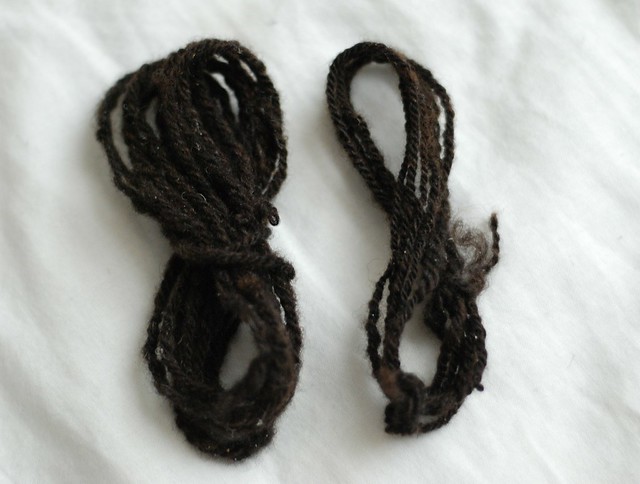I think I need to set higher standards for my fleece-buying, because at this rate I'll be filling up the flat in no time. The trouble is, every time I find a fleece I like, it automatically becomes ᴛʜᴇ ᴍᴏsᴛ ʙᴇᴀᴜᴛɪғᴜʟ ғʟᴇᴇᴄᴇ ɪɴ ᴛʜᴇ ᴡᴏʀʟᴅ.
However, I really think this one just might be the most beautiful fleece. The most beautiful fleece I have, anyway.

I've said it before and I'll say it again: Buying fleece on eBay is a gamble. (Never trust a listing where the only picture is of the sheep in a field ;) However, as with all gambles - sometimes you win, sometimes you lose, sometimes you hit the jackpot.
I've won before, and I've lost, and this time I think I hit the jackpot...!
It's a rooed black lamb's fleece, Shetland x Jacob cross. I thought it would be nice, but not this nice! It is soft as a little black cloud. Shetland fleece can be very fine but it can also vary a lot, and Jacob has a reputation for being quite a 'strong' wool - but this is absolutely next-to-the-skin soft and cuddly. Fantastic crimp too, to say nothing of that gorgeous almost-black, dark-chocolate color.
The whole thing is only 450g, and it will wash up to less than that after I remove the lanolin and other gunk. It's quite clean, with just a little veggie matter, but pretty darn greasy. It's just gorgeous.
A rooed fleece is not shorn - instead the fleece is pulled right off the animal as it sheds it naturally. Only certain breeds of sheep can be rooed, mainly primitive breeds, Shetland being one of them. Not all Shetlands will roo though, and some won't and then all of a sudden one year they will, or only on certain parts of their body... it's complicated. A rooed fleece is something of a rarity.
Rooed fleece is different from shorn fleece in a couple of ways: For one, it eliminates the problem of the 'rise', or a weak spot in the fleece where it would have been shed, which can be an issue in Shetland fleeces (LongdrawJames has a good video about this).

What am I going to make with this beautiful fleece? Not sure yet. Something luxurious. I've done some small samples and swatches but I haven't quite decided yet.

Right now I'm less worrying about what I'll end up making with it, and more just enjoying the experience of handling this heavenly soft wool. (It makes me want to cry when I meet people who think all wool is itchy...)
~Joyuna

 The Grateful Crane Shawl
The Grateful Crane Shawl Elven Slippers
Elven Slippers Russell Square Mitts
Russell Square Mitts Russell Square Tam
Russell Square Tam iTouch Jumper
iTouch Jumper Twisty Wristband
Twisty Wristband Mawata Pulsewarmers
Mawata Pulsewarmers
No comments:
Post a Comment